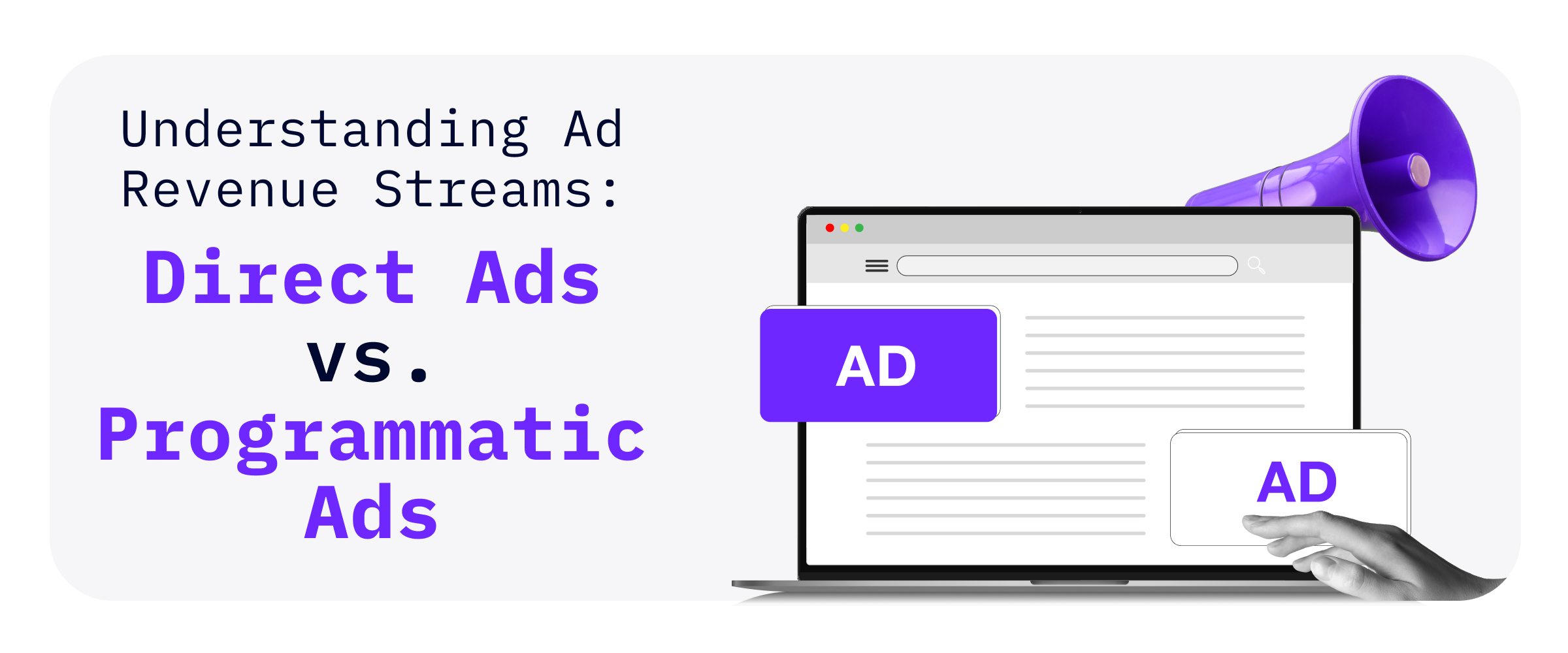
In today’s digital publishing landscape, understanding different advertising revenue streams is essential for maximizing your site’s earning potential. Two primary methods dominate the market: direct advertising and programmatic advertising. Each offers distinct advantages and challenges for publishers of all sizes.
Direct Advertising Explained
Direct advertising involves selling ad space directly to advertisers without intermediaries. This traditional approach creates one-to-one relationships between publishers and advertisers.
Key Characteristics of Direct Advertising:
- Personal relationships: Direct communication with advertisers and agencies
- Higher rates: Typically commands premium CPMs due to guaranteed placements
- Manual process: Requires sales teams and direct negotiation
- Campaign management: Publishers handle delivery, reporting, and optimization
- Creative control: More oversight on ad quality and format
Direct deals are particularly valuable for publishers with highly targeted audiences or premium content that attracts specific advertisers.
Programmatic Advertising Explained
Programmatic advertising uses automated technology to buy and sell digital ad inventory through an auction process. This technology-driven approach connects publishers to a vast network of potential advertisers.
Key Characteristics of Programmatic Advertising:
- Automation: Technology handles the buying and selling process
- Real-time bidding: Ads sold through instantaneous auctions
- Broader reach: Access to numerous advertisers and demand sources
- Data-driven targeting: Uses audience data for improved ad relevance
- Efficiency at scale: Monetizes inventory without direct sales efforts
Programmatic technology continues to evolve, now encompassing display, video, native, and even audio advertising formats.
Revenue Comparison: What to Expect
Understanding the revenue implications of each approach helps publishers make informed decisions:
| Factor | Direct Advertising | Programmatic Advertising |
| CPM Rates | Generally higher | Typically lower but improving |
| Revenue Predictability | More stable and forecastable | More variable based on market demand |
| Fill Rate | Limited by direct sales capacity | Higher overall fill rates |
| Revenue Potential | Limited by sales team capacity | Scales with traffic and inventory |
| Operational Costs | Higher (requires sales team) | Lower (technology-driven) |
Building a Balanced Revenue Strategy
Most successful publishers today implement a hybrid approach that leverages the strengths of both models:
1. Strategic Inventory Allocation
Identify which inventory segments perform best with each approach:
- Premium placements may generate higher returns through direct sales
- Above-the-fold positions often work well with either approach
- Below-the-fold and additional inventory typically performs better programmatically
2. Use Technology to Create Competition
Implement header bidding and other advanced technologies that allow programmatic demand to compete with direct campaigns, raising overall yield.
3. Develop Complementary Sales Approaches
Consider these complementary sales strategies:
- Programmatic direct: Combining the efficiency of programmatic with the certainty of direct deals
- Private marketplaces: Invitation-only auctions for select advertisers
- Preferred deals: First-look access at negotiated prices before inventory goes to open auction
4. Focus on First-Party Data
As the industry moves away from third-party cookies, publishers who effectively collect and utilize first-party data will have advantages in both direct and programmatic channels.
Making the Right Choice for Your Publication
The optimal approach depends on several factors unique to your publication:
- Audience size and composition: Larger, more targeted audiences often attract direct advertisers
- Content category: Some niches command higher premiums from direct advertisers
- Team resources: Direct sales require dedicated personnel
- Technical capabilities: Programmatic optimization requires technical expertise
- Growth stage: Building programmatic foundation first is often more scalable
Conclusion
Rather than viewing direct and programmatic as competing approaches, forward-thinking publishers recognize them as complementary strategies in a comprehensive monetization plan. By understanding the strengths and limitations of each model, you can develop an integrated approach that maximizes revenue while maintaining a positive user experience.
The most successful publishers continually test different combinations of these strategies, measure results carefully, and adjust their approach based on performance data. This flexible, data-driven approach is essential in the rapidly evolving digital advertising landscape.
YieldSolutions helps publishers optimize their advertising revenue through expert guidance on both direct and programmatic advertising strategies. Contact our team to learn how we can help you develop a balanced approach for maximum results.
